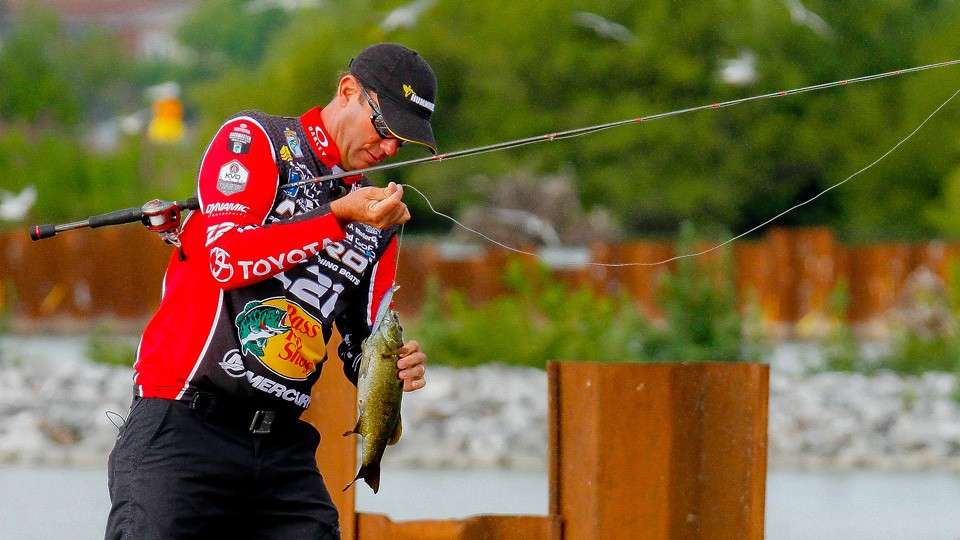
Jerkbaits have always been one of my favorite lures for locating largemouth and smallmouth bass in clear water because it is such a sight-oriented presentation.
That’s why I relied heavily on it here at the Bassmaster Classic Bracket event this week on the Niagara River.
The water is really clear – the bottom is visible in 8 to 10 feet of water in many areas. When I saw the clarity and the scattered grass and rocks during practice, not to mention the strong current, I figured a finesse bait would be tough to present properly.
I also noticed this river has a lot of spot-tail and emerald shiners and saw several diving birds working the baitfish on the flats. I’ve seen the same thing occur in the St. Clair River and Detroit River where I’ve also used a jerkbait effectively under these conditions.
That’s not to say other presentations won’t work, but I discovered the jerkbait was the most efficient way for me to catch them during practice and the first round.
One thing I’ve learned about smallmouth is they will come a long way to bite the jerkbait in clear water. The visually stimulating, erratic action of a jerkbait appeals to the smallmouth’s aggressive nature and it also allows me to cover more water effectively.
I’ve been fishing two different sizes of my Strike King KVD jerkbait at the Niagara – the standard, three-hook 300 series and the deep runner version. I alternate, depending on depth. My colors were pearl/blue and crystal shad, both of which are good baitfish imitators and offer a lot of flash.
The current is so strong in some areas here that it’s impossible to make headway with the trolling motor on high speed. That’s even too strong for muscular smallmouth, so the fish are generally locked on the bottom or tucked behind rocks or weed beds.
The fish are lying there looking up, waiting for these pods of baitfish to blow by where they can race up, grab them and drop back to the bottom. That’s another reason the jerkbait works so well; they see that flash and erratic action and respond instinctively which leads to more bites.
I’m casting up current and jerking the bait hard and fast to make it work in that current. However, I’m jerking on a slack line which makes that bait dart side to side but doesn’t pull it out of the strike zone. I’m fishing it very aggressively, more so than I would if I were fishing for largemouth.
Smallmouth are tough to land in a lake let alone in a heavy current like we have here. That’s why it’s so critical to change out standard jerkbait hooks with something that will hold these fish while you fight them through the current.
I switched to my Mustad KVD No. 4 extra strong, extra short Triple Grip hooks, and it’s made a huge difference in the number of fish I land. A round bend hook – standard on most jerkbaits – has a lot of flex and that’s your worst enemy when fishing fish as strong as smallmouth in current.
Nothing is perfect under these conditions, but at the time of this writing, I haven’t lost many fish. I’m fishing these baits on my Quantum Tour KVD 6-10 medium heavy rod with the Tour KVD baitcaster in 6.6:1 gear ratio. My line is 12-pound, Bass Pro Shops XPS Fluorocarbon which is equally critical because it helps me get the bait deeper and the lack of stretch allows the bait to work properly.
Perhaps the experiences I’ve encountered here on the Niagara will help you the next time you’re fishing for smallmouth in clear water. The jerkbait isn’t the only choice, but it can be a darn good one when conditions are right.
Remember, it’s all about the attitude!
Kevin VanDam’s column appears weekly on Bassmaster.com. You can also find him on Facebook, Twitter and Instagram.

